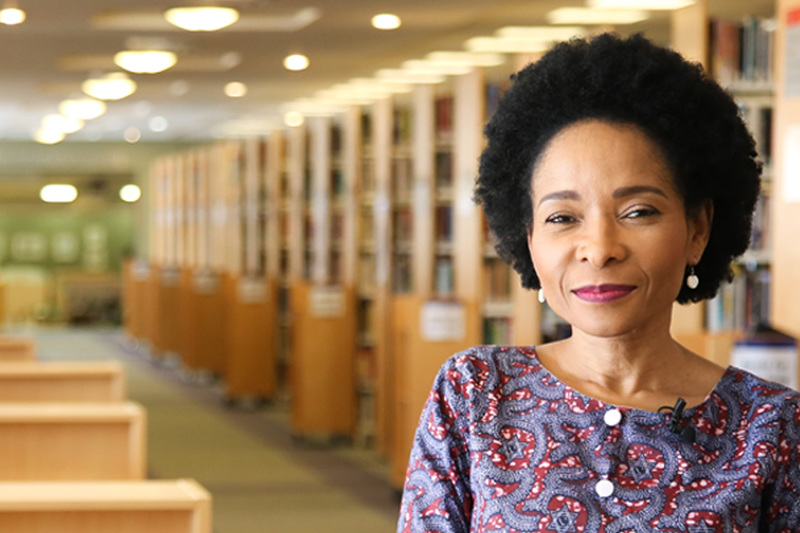Naming of UCT buildings
29 March 2019 | From Kgethi
Dear colleagues and students
The University of Cape Town (UCT) endeavours to create an inclusive environment in which students and staff see themselves – their cultures, values, heritage and knowledge systems – reflected through the various aspects of everyday life on our campus. One of the ways of doing this is to consider how the names of buildings and spaces at UCT are reflective of the diversity of the campus community.
UCT recognises that names have meaning and that, as it happens at other institutions around the world, choices are made at certain times in history to honour specific people. However, it is also the role of a university to question the extent to which the institution continues to embrace and uphold names, symbols and imagery that uncritically honour those whom history has shown to be dishonourable.
At the same time, the act of naming offers an opportunity to think deeply about what the university represents and how it can reinforce the values that it upholds through a naming or renaming process. The renaming of Jameson Hall to Sarah Baartman Hall, for example, was a moment in which the university acknowledged the dishonourable history of Leander Starr Jameson while it simultaneously provided an opportunity to recognise the multifaceted struggles and resilience of South African women. Another example at UCT is the MR Drennan Anatomy Museum, which currently honours someone who was complicit in obtaining unethically procured human remains. Names such as these will need to change.
Of course, in the process of naming, UCT should not only honour specific individuals, but should also explore the extent to which names may be an indication of the universityʼs location, research, teaching and social engagement, for example Huri ǂoaxa (Hoerikwaggo) or Masingene.
The mandate of the Naming of Buildings Committee (NoBC) requires the committee to consider applications for naming and renaming to ensure that UCT adheres to its strategic commitment as set out in the first goal of the 2016–2020 Strategic Planning Framework to reinforce a new, inclusive identity for the university through an appropriate display of artworks, symbols, choice of names of buildings, and use of indigenous South African languages.
You are invited, as a member of the wider UCT community, to submit proposals to the NoBC on the following:
- Renaming of buildings that are currently named. In this instance the proposal must be accompanied by a motivation that convincingly makes the case for why the current name should be removed and proposes a new name, and motivates the rationale for adopting the new name. You are invited to consider names of people but also names other than those of people, to offer, as suggested above, a wider reflection of UCTʼs identity as a university. These will be prioritised by the NoBC.
- Naming of buildings that are not currently named, such as the New Lecture Theatre.
The following guidelines pertain to process:
- Where a name is linked to a specific faculty or residence, the appropriate governance structures must be consulted in respect of the proposal.
- Once the proposal is submitted to the NoBC, the committee will consider it based on the following criteria:
- the possible legal implications in a name change for existing names of buildings, eg whether the National Heritage Resources Act 25 of 1999 applies or there are existing donor restrictions
- the historical and social significance of the existing name and the proposed new name
- the circumstances that necessitate the change in the name of the building
- the reasons as articulated in the motivation for renaming and/or naming.
- Names could be names of people (eg Sarah Baartman Hall), a description of the (dominant) use or users of the building (eg Computer Science Building), or words that describe a concept (eg Kopano).
- With the exception of UCT Chancellor Graça Machel, and the possible exception of a major donor or benefactor, proposals for names of living people will not be considered.
- Proposals to name a building, residence, room, space or lecture theatre, road or sports facility in honour of a person (including a staff member) who has died will only be considered two years after their death.
- The NoBC will consider the proposals and, based on the above criteria, will solicit comments on the buildings that should be named or renamed.
- The NoBC will make a final recommendation to Council after comments have been considered.
Proposals should be sent to namingproposals@uct.ac.za. Please note that the committee will likely receive many proposals and as such it might not be possible for them to reply to all emails received.
You can access the register of UCT building names.
The cut-off for proposals is 17:00 on Friday, 19 April 2019.
The process of renaming buildings is an opportune moment to create a UCT environment that is much more inclusive and reflective of our diversity as a community.
Lastly, but importantly, I want to acknowledge and thank the Deputy Vice-Chancellor: Transformation, Professor Loretta Feris, and the NoBC in driving this key transformative work and ensuring that the names of buildings, rooms and spaces on our campus are a reflection of the multiplicity and diversity of cultures at UCT.
Sincerely
Professor Mamokgethi Phakeng
Vice-Chancellor
 This work is licensed under a Creative Commons Attribution-NoDerivatives 4.0 International License.
This work is licensed under a Creative Commons Attribution-NoDerivatives 4.0 International License.
Please view the republishing articles page for more information.









